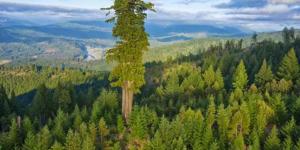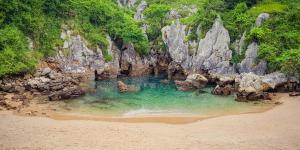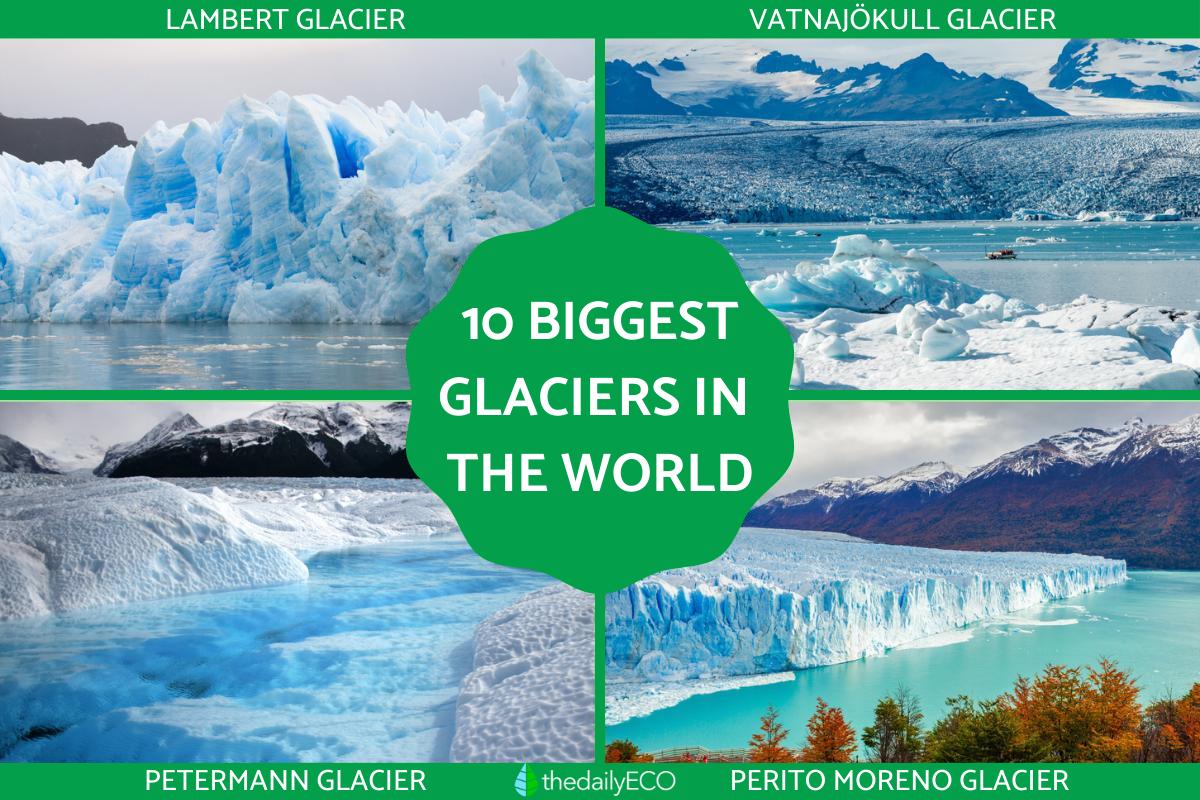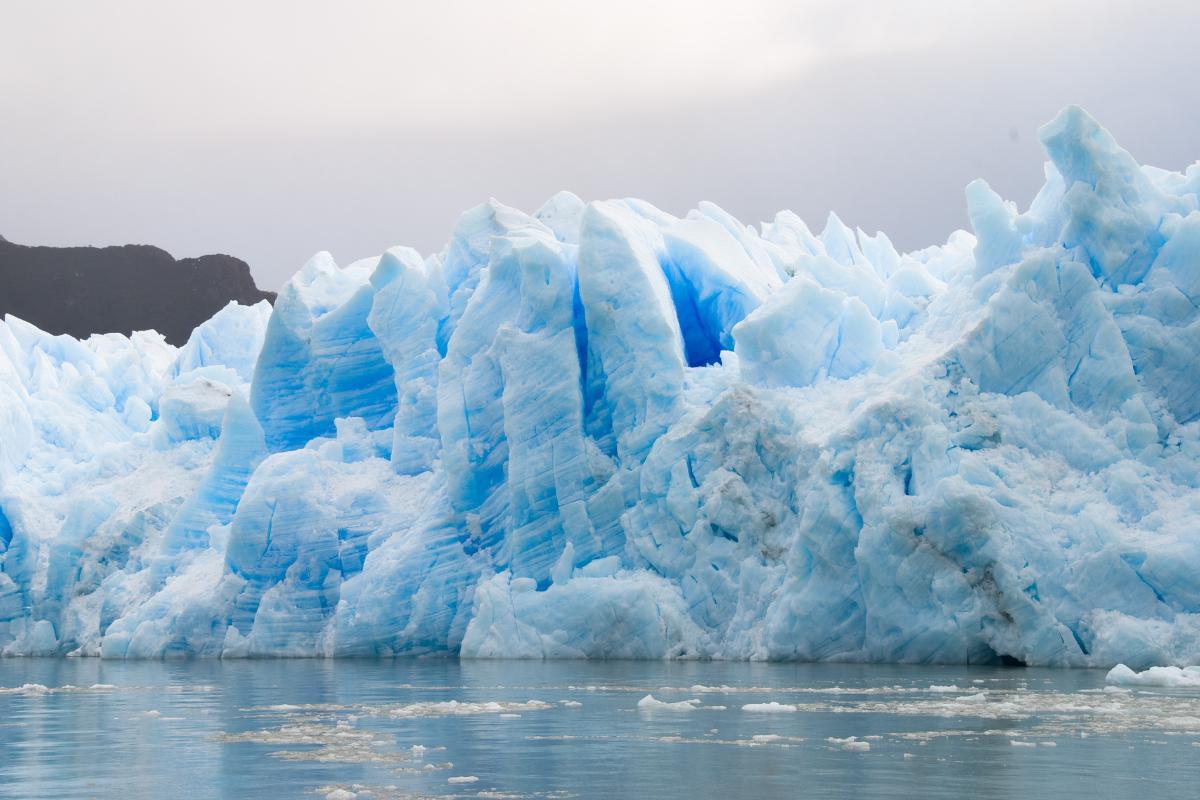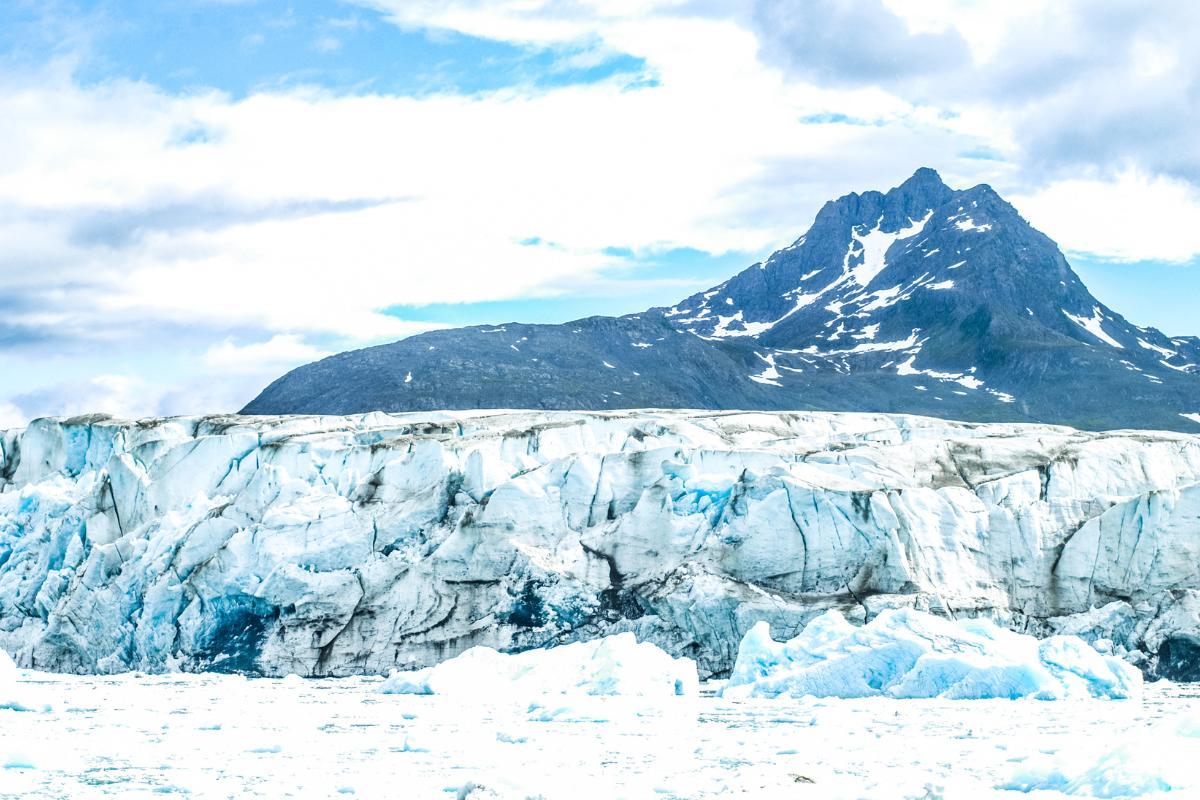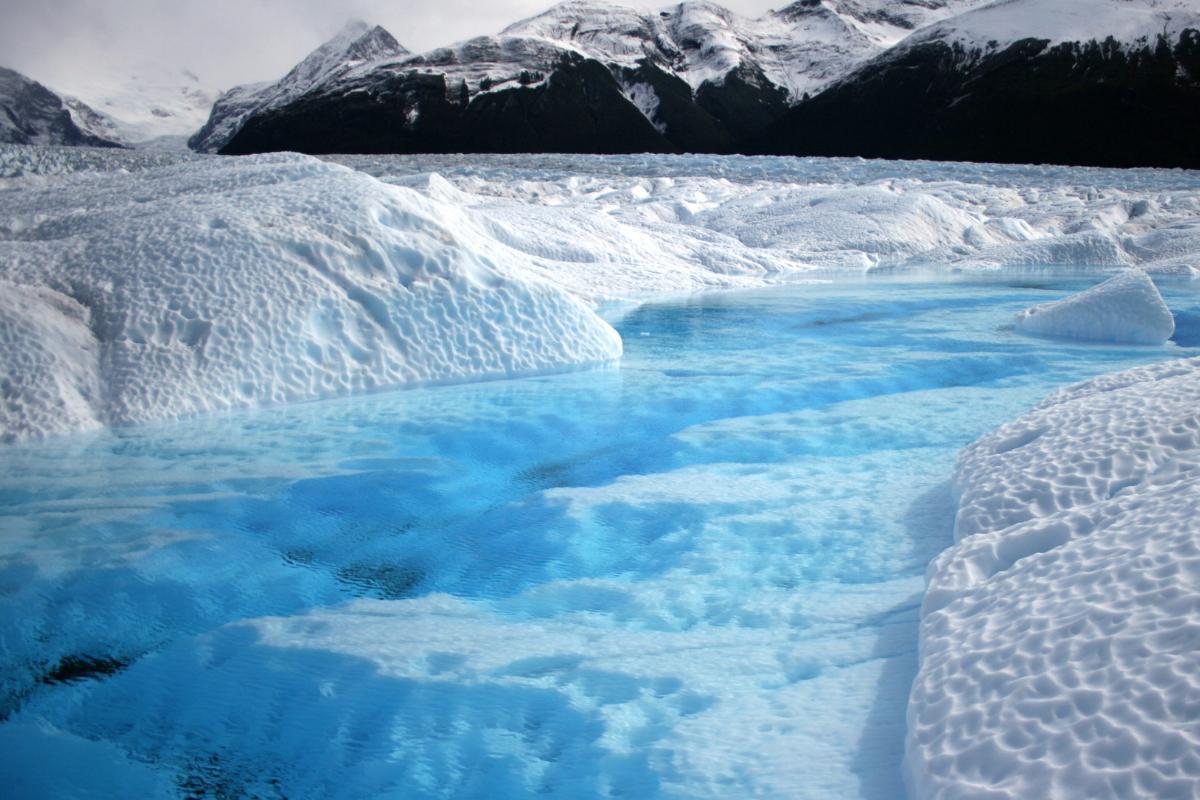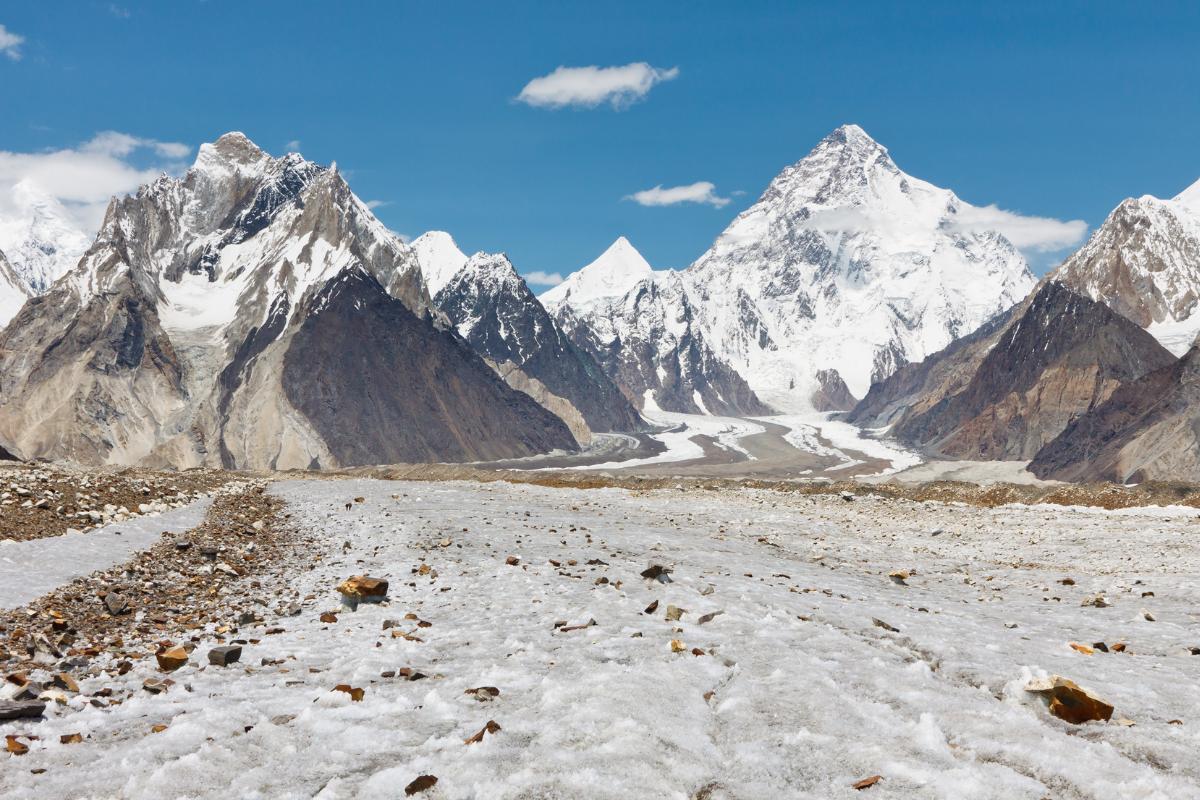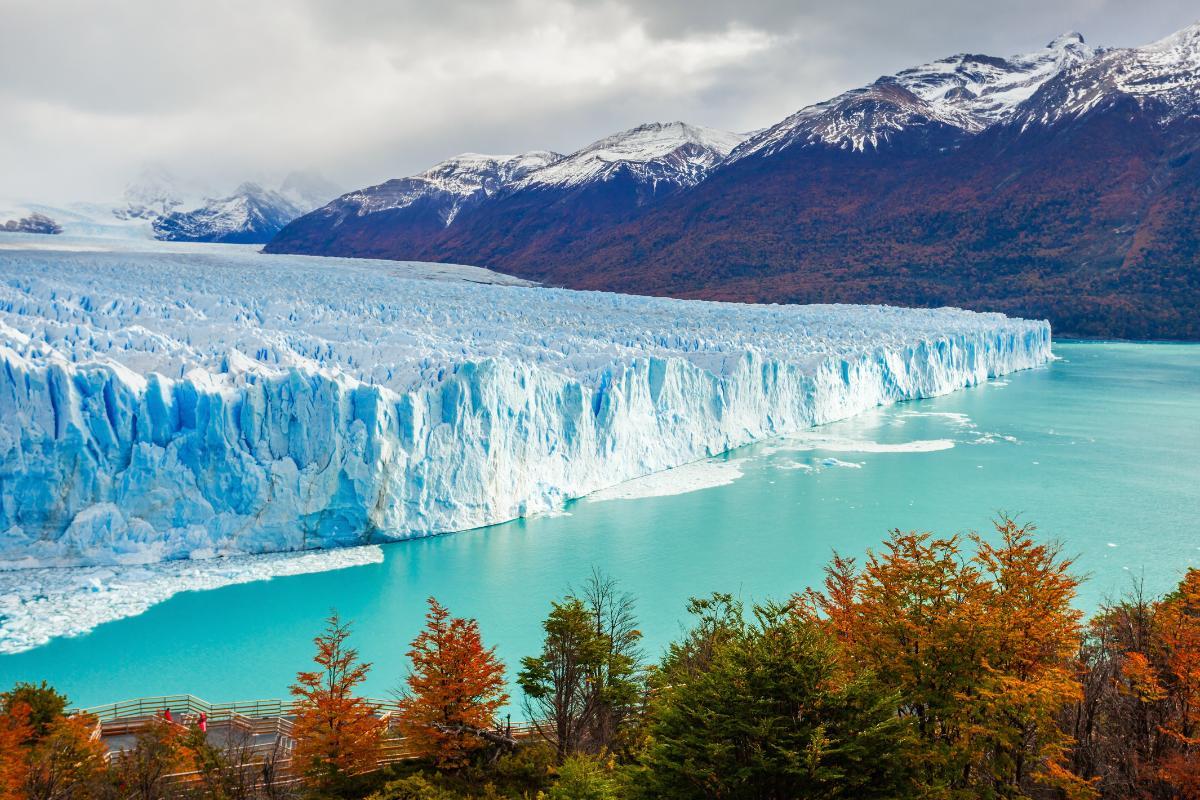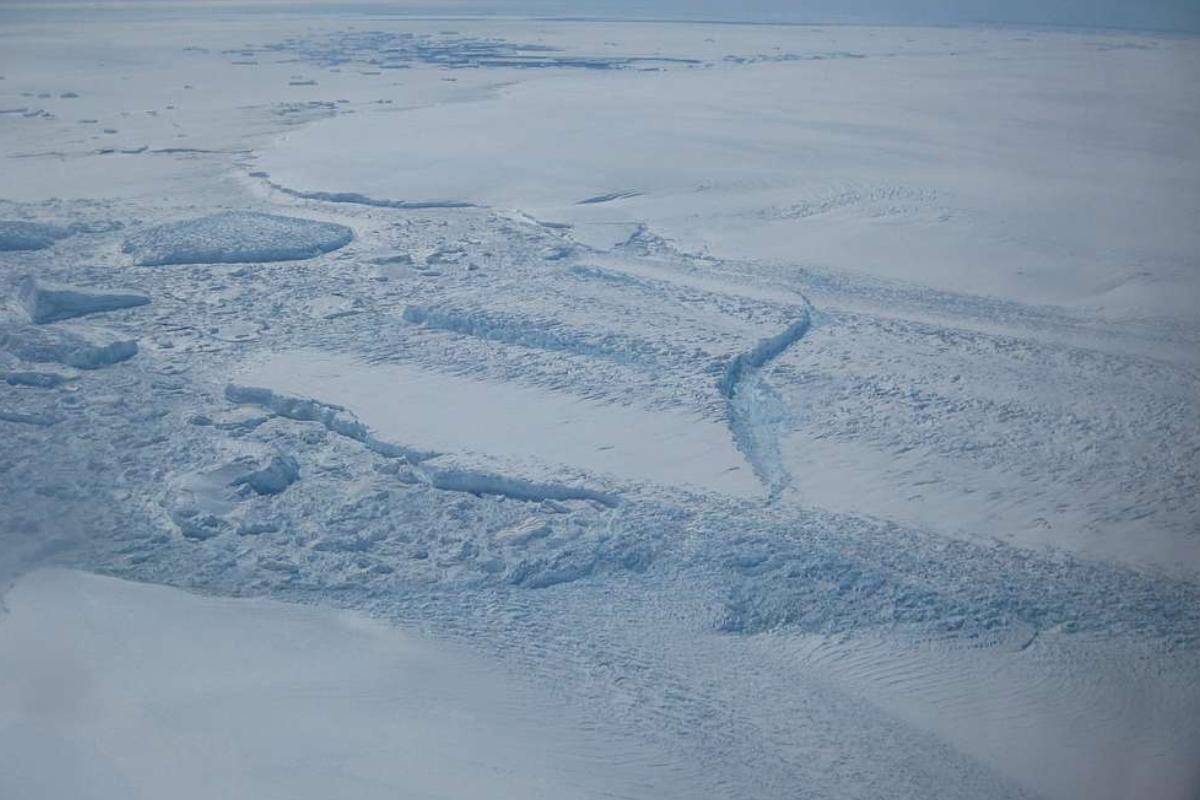Biggest Glaciers in the World


For ice to become a glacier, it needs to be so large and dense that it moves under its own weight. The formation of glaciers takes years, sometimes several centuries. They are made of snow that has accumulated and compacted into ice over these very long periods. Their movement helps to form landscapes all over the world, especially during colder periods of history. In addition to being one of the largest reserves of fresh water on the planet, they are environmental indicators. Their decline is a clear sign of the effects of global warming and climate change and the impact they have on our planet.
To better understand their importance, thedailyECO shares the 10 biggest glaciers in the world. Some of the longest glaciers include the Lambert, Vatnajökull, Columbia, Kaskawulsh, Petermann, Baltoro, Jostedalsbreen, Perito Moreno, Pío XI and Denman glaciers.
- Lambert Glacier
- Vatnajökull Glacier
- Columbia Glacier
- Kaskawulsh Glacier
- Petermann Glacier
- Baltoro Glacier
- Jostedalsbreen Glacier
- Perito Moreno Glacier
- Brüggen Glacier
- Denman Glacier
Lambert Glacier
Located in East Antarctica, the Lambert Glacier has been recognized as the biggest glacier in the world. It spans 100 km in width, more than 400 km in length and nearly 2,500 m in depth. The Lambert Glacier is a crucial object of study for scientists investigating climate change and the dynamics of the Antarctic ice sheets. Due to its remote location and extreme climate conditions, the Lambert Glacier has been relatively little explored and most studies have been conducted through remote sensing.
Glaciers are able to create features in the landscape as they erode the ground beneath them. Learn more with our article on what is glacial erosion?

Vatnajökull Glacier
Within Iceland's Vatnajökull National Park, there is a colossus that holds the title of the largest glacier in Europe by volume. Its extension reaches 150 km from east to west and 100 km from north to south, is only surpassed by the Austfonna glacier in Nordaustlandet, Norway.
Under its surface, the ice reaches an average thickness of 400 m, exceeding 1,000 m at its maximum point. The Jökulsá á Fjöllum River rises from the Vatnajökull glacier and the smaller Breiðamerkurjökull glacier emerges. Unfortunately, the majesty of Vatnajökull is threatened by global warming and volcanic activity in the region, factors that have triggered a worrying retreat of the glacier.

Columbia Glacier
Not to be confused with the Columbia Glacier in Washington state, the Columbia Glacier that is one of the largest glaciers in the world is located in Alaska. It is a mass of ice that flows directly into the sea. It is the biggest glacier in North America and has a total area of 5,186 km².
This frozen giant is being deteriorated by climate change in a terrifying way. Since the 1980s, the Columbia Glacier has succumbed to an alarming retreat, losing more than half of its volume and thickness. With the passage of time, exposed rock rings, known as trimlines, are generated and become increasingly prominent. These mark the inexorable retreat of this glacier.
Discover more about the importance of ice for our planet with our article on what is sea ice?

Kaskawulsh Glacier
The Kaskawulsh Glacier is the second biggest glacier in North America, occupying an area of 39,000 km² with a width of 480 to 640 meters. It is located in the San Elias mountain range within Kluane National Park, in southeastern Alaska.
Like its neighbor the Columbia Glacier, the Kaskawulsh Glacier has experienced alarming retreat in recent decades. This is another worrying sign of the impact of climate change on this pristine ecosystem. Since the beginning of the 20th century, the glacier has lost more than 10% of its surface. Its retreat is increasingly accelerating thanks to rising global temperatures.
Learn more about how climate change affects global ecosystems with our article on the types of environmental impact.

Petermann Glacier
Located on the northwest coast of Greenland, the Petermann Glacier is one of the largest glaciers in the region. Named after the German geographer August Petermann, it is 70 km long, 15 km wide and 80 to 600 meters deep. The tongue of a glacier is the part which extends and narrows from its main body. The Petermann tongue is located over the Arctic Sea and connects it with the Greenland ice mass.
Like other glaciers, in recent years it has suffered a significant retreat due to climate change and other factors. In the period 2010-2012, instability caused two large pieces to break off into icebergs.
To learn more about iceberg formation, check out our article on what are icebergs?

Baltoro Glacier
Rising between the towering peaks of the Himalayan and the Karakoram mountain ranges, the Baltoro Glacier stretches for 57 km. This makes it one of the longest glaciers in the world outside the polar regions with an area of 3,678 km².
The Baltoro Glacier is home to some of the highest peaks in the world. This includes K2, the second highest mountain on the planet. Although challenging, the ascent to these peaks offers experienced climbers the opportunity to reach their summit and see panoramic views.
For some fun geographical information, you can go from learning about the biggest glaciers in the world to knowing what is the smallest beach in the world.

Jostedalsbreen Glacier
The Jostedalsbreen glacier is located in Norway within the Jostedalsbreen national park, covering an area of 487 km². It has a length of 60 km. Its highest point is known as Brenibba and it reaches 2,018 meters above sea level. Because the Briksdalsbreen arm lost several meters of ice in 2006, mountaineering in the region has been banned.

Perito Moreno Glacier
In the southwest Santa Cruz province of Argentina is the Perito Moreno glacier, a 250 km² natural wonder. Born in the Southern Patagonian ice field, it originated in the Bernardo O'Higgins National Park in Chile. In the last 80 years it had not experienced major changes, but from 2020 to the present, a retreat already reaching 700 m was documented.
A very particular curiosity is that there is a small insect called the Patagonian dragon (Andiperla willinki) that live in this and other glaciers in Argentina and. This insect spends its entire life in the ice and feeds on bacteria that is blown in by wind. It was once considered extinct, but has since been rediscovered.

Brüggen Glacier
At the southern end of Chilean Patagonia in the Southern Ice Field stands the Brüggen Glacier, also known as the Pío XI Glacier. It is a large mass of ice that is recognized as the largest glacier in the southern hemisphere. It has a surface area of 1,242 km², extending 64 km in length and reaching a height of up to 75 m at its front. Unlike other glaciers that flow into lakes or fjords, the Brüggen Glacier flows directly into the Pacific Ocean.
The Brüggen Glacier has experienced unusual progress in recent years, in contrast to the global trend of glacier retreat. However, this situation does not exempt it from the adverse effects of climate change.
Learn more about how fjords are formed with our related guide.

Denman Glacier
Located in East Antarctica's Wilkes Land, Denman Glacier covers an area of 4,690 km² and extends for 112 km. This icy giant is part of the Aurora Australis glacier system and is one of the largest outlet glaciers in East Antarctica. Denman Glacier is famous for its rapid flow, reaching speeds of up to 3-10 meters (10-33 feet) per day. This speed is due to the presence of a layer of subglacial water that lubricates the glacier bed, allowing it to slide more easily.
Now you know what are the biggest, longest and biggest glaciers in the world, you might want to discover more about these marvels of nature. Do just that with our article on what is a glacial moraine?

If you want to read similar articles to Biggest Glaciers in the World, we recommend you visit our Facts about nature category.
- Villalba, R. (2019). Glaciers and climate change.

